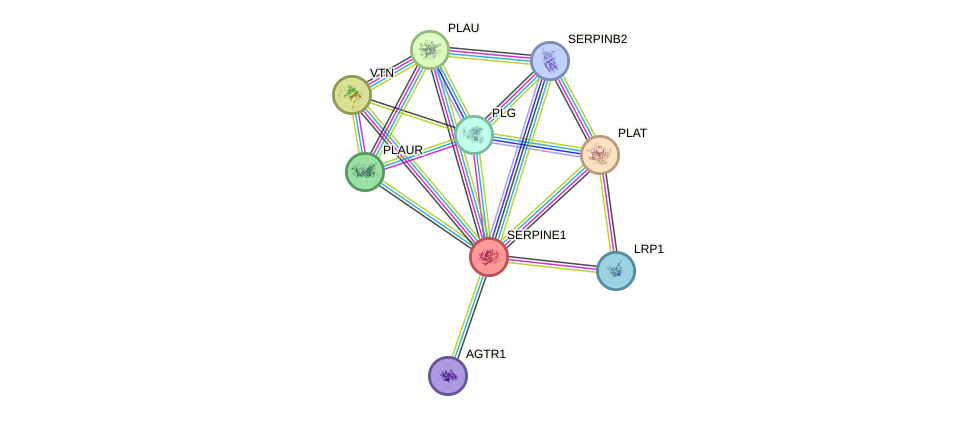GenAge entry for SERPINE1 (Homo sapiens)
Gene name (HAGRID: 301)
- HGNC symbol
- SERPINE1
- Aliases
- PAI; PLANH1; PAI1
- Common name
- serpin peptidase inhibitor, clade E (nexin, plasminogen activator inhibitor type 1), member 1
Potential relevance to the human ageing process
- Main reason for selection
- Entry selected based on evidence linking the gene product to the regulation or control of genes previously linked to ageing
- Description
PAI-1 (SERPINE1) is a serine protease inhibitor, which is elevated in Klotho (KL)-deficient mice. Klotho-deficient mice exhibit an accelerated aging-like phenotype including reduced lifespan, arteriosclerosis, and emphysema. PAI-1 deficiency retards the development of senescence and protects organ structure and function while prolonging the lifespan of the Klotho mutant mice [3484].
Cytogenetic information
- Cytogenetic band
- 7q22.1
- Location
- 101,127,089 bp to 101,139,266 bp
- Orientation
- Plus strand
Protein information
- Gene Ontology
-
Process: GO:0001300; chronological cell aging
GO:0001525; angiogenesis
GO:0002576; platelet degranulation
GO:0007623; circadian rhythm
GO:0010469; regulation of receptor activity
GO:0010757; negative regulation of plasminogen activation
GO:0010951; negative regulation of endopeptidase activity
GO:0014912; negative regulation of smooth muscle cell migration
GO:0030194; positive regulation of blood coagulation
GO:0030195; negative regulation of blood coagulation
GO:0030198; extracellular matrix organization
And 19 more GO terms Cellular component: GO:0005576; extracellular region
GO:0005615; extracellular space
GO:0005886; plasma membrane
GO:0031012; extracellular matrix
GO:0031093; platelet alpha granule lumen
GO:0070062; extracellular exosome
Show all GO termsFunction: GO:0002020; protease binding
GO:0004867; serine-type endopeptidase inhibitor activity
GO:0005102; receptor binding
GO:0005515; protein binding
Protein interactions and network
Retrieve sequences for SERPINE1
Homologs in model organisms
In other databases
- GenAge microarray genes
- This gene is present as SERPINE1
- LongevityMap
- This gene is present as SERPINE1
- CellAge
- This gene is present as SERPINE1

